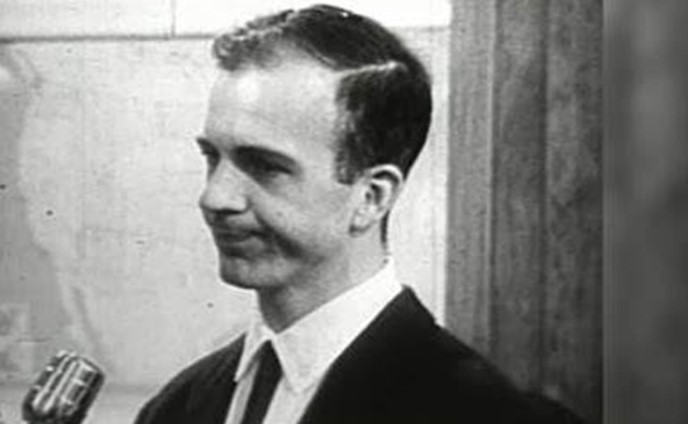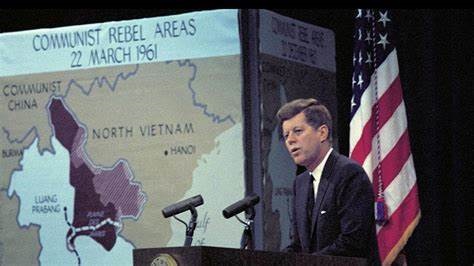The Kennedy Assassination & Misreading Data
Posted By Morris van de Camp On In North American New Right | Comments Disabled [1]
[1]Lee Harvey Oswald holding the rifle he would use to assassinate JFK and the pistol he would use to murder Dallas policeman J. D. Tippit. He is holding two Communist publications called The Militant and The Worker.[1] [2]
American culture is still spinning wildly from the assassination of US President John Fitzgerald Kennedy in Dallas on November 22, 1963 by a self-radicalized antifa gunman acting alone [3]. American liberals and Leftist sympathizers in particular have had a tough time dealing with the murder [4]. Kennedy’s widow later remarked [5] that “[JFK] didn’t even have the satisfaction of being killed for civil rights. It had to be some silly little Communist [6].”
Jacqueline Kennedy’s remarks perfectly sum up the snobbery and inability to read data that is essential to the mentality of JFK’s political base. Jacqueline Kennedy could have rightly pointed out that Kennedy died fighting Communism in the same way he’d valiantly lived fighting Communism. However, Kennedy’s rank-and-file supporters included a hardened core of anti-anti-Communists [7] who believed that the threat of Communism was being exaggerated and reflexively refused to support conservative ideas as they were being developed in places like Dallas, Texas in the early 1960s. Anti-anti-Communism was primarily motivated by snobbery rather than a genuine analysis of facts.
Kennedy died before his presidency’s problems became clear. He’d won in 1960 through election fraud [9] in Texas and Illinois [10]. His reckless sexual escapades that undoubtedly clouded his judgment were never reported at the time by a sympathetic press. [11] And his policies in Vietnam guaranteed a larger war, and that conflict would consume his successor.
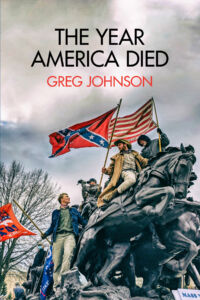 [12]
[12]You can buy Greg Johnson’s The Year America Died here. [13]
Kennedy also tepidly supported “civil rights” during his lifetime. After he died in a spectacular way, sub-Saharan activists and white liberal virtue-signalers were able to develop a useful narrative out of Kennedy’s tepid support to frame “civil rights” as a martyr’s cause. The resulting 1964 Civil Rights Act became an illicit second constitution, and sub-Saharans were empowered by it to riot and commit crimes on a vast scale.
Understanding the Kennedy assassination is important because it shows the problems with the center-Left political in the American establishment before and after the killing. At the time of the assassination, mainstream American culture was extremely liberal, and liberal establishment activists were pushing for policies that would lead to disaster. These people had a difficult time identifying looming dangers.
The probable bad outcomes of these policies were realized and resisted within Kennedy’s own Democratic Party in 1963. Indeed, Kennedy was in Dallas to address the tension over “civil rights” and the other matters. How those matters would have been resolved had Kennedy survived his trip to Dallas is anyone’s guess.
The mainstream media’s coverage of Kennedy’s assassination showed its liberal and Leftist bias, and the ongoing generalized mistrust of the media began that day. Kennedy’s assassination also turned Leftists into conspiracy theorists, and these theories helped poison the national discourse.
Quakers, Quakers everywhere
The 1960s were a decade shaped by the Quakers. At every critical point in the 1960s there is an ordinary Quaker in a prominent position, and this includes the Kennedy assassination. This isn’t The Protocols of the Elders [14] of Pendle [15] Hill [16], but is rather related to three important factors regarding the Quakers: Quakers were politically ascendant in the mid-twentieth century; they tend to be liberal, and the 1960s was a liberal time; and there are many people connected to the Quakers in some form or fashion going back to America’s colonial founding [17].
Quakerism is one of America’s founding Anglo folkways [18], and is a form of extreme Protestantism that was developed in Northern England in the early seventeenth century. Quaker theology is similar to that of the Pietists and other Protestant sects in the German-speaking parts of Europe, as well that of the Moravians [19] in Bohemia.
The Quakers settled in large numbers in the Delaware Valley in the seventeenth century. Lord William Penn, Pennsylvania’s proprietor, also recruited German Pietists and Moravians from Europe to help develop the colony. This extended German/Quaker group made a big impact on the culture of the American Midwest [20]. Quakers and Moravians were also recruited to settle in North Carolina [21] in the eighteenth century.
 [22]
[22]The Chapel at the Eisenhower Presidential Library and Museum in Abilene, Kansas is an example of the influence of Quaker and German Pietist theology upon architecture. The chapel contains no specific Christian imagery. Instead of being a “church” or a “meeting house,” it is called a “Place of Meditation.” While this chapel appears to represent the religious beliefs of all mankind, it is really a specific reflection of the culture of the American Midlands which begin in the Quaker Galilee in the Delaware River Valley.
The roots of the Quakers’ remarkable involvement in American society’s turning points started with two earlier events: the domestic political battles over Communism in the United States at the end of the 1940s, and the election of the Pietist Dwight Eisenhower to the presidency, along with his Quaker running mate, Richard Nixon, in 1952. Eisenhower had run on his war record in Europe and cruised to victory. Nixon’s meteoric rise started in 1948, when he was on the House Un-American Activities Committee. This organization investigated Soviet spy rings within the US government.
Quaker shortcomings, liberal shortcomings
The Quaker branch of Christendom is a loose cannon when it comes to theology and politics. Quakers are usually pacifists, follow their “inner light,” and promote broad social tolerance. However, following one’s “inner light” ultimately means a person can believe whatever they want to believe [23]. Promoting broad social tolerance works until one is tolerating a group that is seeking absolute power or dealing with unrepentant criminals. And Quakerism and other pacifist sects have another problem: Their followers often have a tough time recognizing danger.
President Eisenhower, for example, enacted a program called Atoms for Peace [24]. The idea was to give friendly nations nuclear technology so that they could generate cheap energy that would in turn reduce the chance for war through some force of spiritual alchemy. This type of thinking comes right out of Quaker theology [25] and contains plenty of blindness to obvious danger [26]. Not only did the Atoms for Peace program eventually give India and Pakistan nuclear weapons, but it also led to Israel becoming a nuclear power. Iran itself acquired technology that was left over from the program and could potentially create a bomb as well. And in1956, the Eisenhower administration gave information on nuclear energy to the Iraqi government, leading to further chaos in the region for decades.
 [27]
[27]The Atoms for Peace program was developed under the assumption that if Americans shared advanced nuclear technology, other nations would use that technology for peaceful purposes. In fact, it gave various nations the foundation to build their own nuclear weapons.
Quakers didn’t view the constellation of Jewish advisors surrounding Kennedy as a problem, nor did they see Jewish pressure to open America’s gates to hordes of non-white immigrants in the early 1960s as the threat it would become. They likewise failed to see the pressure building in the North’s sub-Saharan ghettos. Many Quakers supported bussing [28] and other “civil rights” measures despite the obvious harm it brought to whites.
Quakers shaping the events of the 1960s
Kennedy won — by fraud — in 1960, but the fact that the Pietist Eisenhower and Quaker Nixon had dominated the national scene for nearly a decade meant that Quakers elsewhere were empowered. It is remarkable how many were involved in key moments of the 1960s.
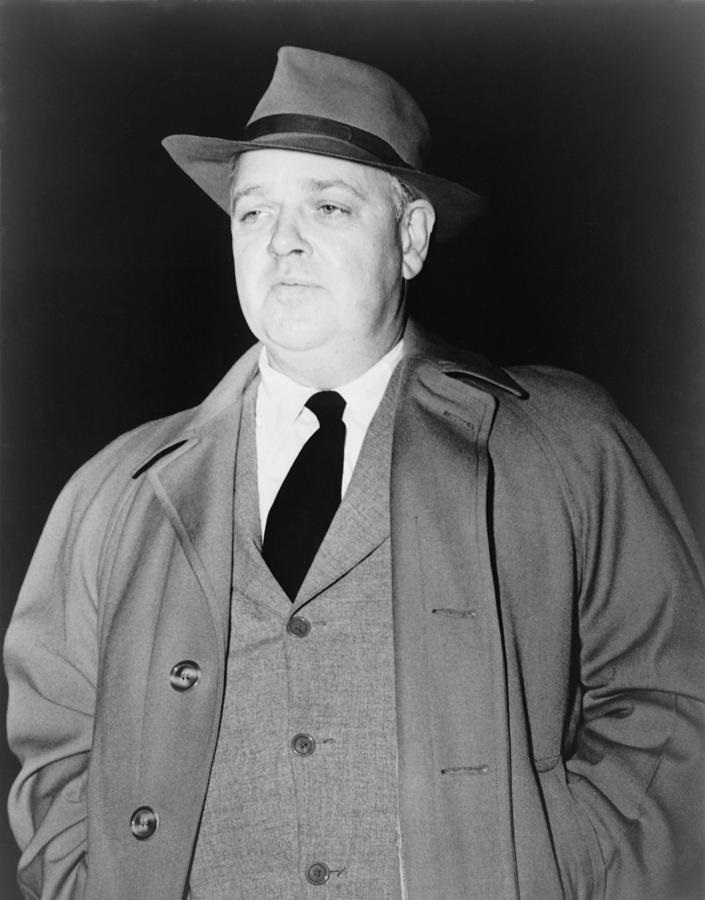 [29]
[29]Whittaker Chambers, a Quaker, was a Soviet spy for a time, but he became disillusioned with Communism and ended his career as an anti-Communist fighter.
The Cold War politics of the 1960s were definitively shaped by a three-way battle [30] between three Quakers. In 1948, then-Congressman Nixon, Whittaker Chambers [31], and former US State Department official Alger Hiss [32] faced off in Congressional hearings regarding Soviet infiltration of the US government. Nixon was looking to rid the government of Communists, and Chambers was an editor at Time Magazine who had been an active Communist as well as involved in espionage. Chambers said he had worked with Hiss in his capacity as a Communist spy to pass information to the Soviets. Hiss was not proven to be a Soviet agent in the hearings, but Hiss was later convicted of perjury.
Scholars still debate whether Hiss had really been a spy or not. US intelligence had deciphered some Soviet codes, and when these intercepts were made public after the end of the Cold War, it certainly appeared that Hiss had, in fact, been working for the Soviets.
Throughout this three-way Quaker shootout, Hiss received plenty of support from anti-anti-Communists in the Democratic Party, the American establishment, and the mainstream media. While Nixon and Chambers were dedicated anti-Communists, many of their fellow Quakers, such as Alger Hiss, either sympathized with Communism or endorsed liberal policies which the Communists also supported.
Other Quakers shaped the 1960s as well. On November 2, 1965 [33], Quaker Norman Morrison [34] set himself on fire and burned himself to death under Secretary of Defense Robert McNamara’s office. He was one of the first Vietnam War protestors, and his act of self-immolation raised awareness of the situation in Southeast Asia among the American public. It is notable that he did this before American troops had actually engaged with the North Vietnamese Army directly in the Battle of Ia Drang [35].
Likewise, the most respectable and serious defendant in the Chicago Seven trial following rioting at the Democratic Convention in Chicago in 1968 was David Dellinger [36]. Though not strictly a Quaker, his religious education and pacifist ideology was very much in keeping with the Quaker worldview.
 [37]
[37]The top folk singer of the 1960s, Joan Baez, was a Quaker [38].
Quakers were so influential in the 1960s that US Secretary of State Henry Kissinger met with a delegation of Quakers in 1969 [39], where he promised that America would withdraw from the Vietnam conflict. The last American combat troops left the country in 1973, although the war continued until 1975. The Vietnam War was the first conflict America clearly lost after integration in the US military began in 1948.
A kindly Quaker and a self-radicalized antifa gunman
Another Quaker who influenced history was Ruth Paine [40]. She allowed Lee Harvey Oswald and his Russian wife, Marina, to live in her house in the weeks prior to the assassination. The Oswalds were having financial difficulties in 1963, and Paine wanted Marina to help her learn Russian. Unbeknownst to Ruth Paine [41] and her husband [42], Lee Oswald was hiding the rifle [43] he would use to kill Kennedy in her house. Ruth didn’t recognize just how dangerous Oswald was until after the assassination. She later said she had disliked Oswald, but instead of exploring why her gut instincts may have been be correct, she sought to understand Oswald on his own terms.
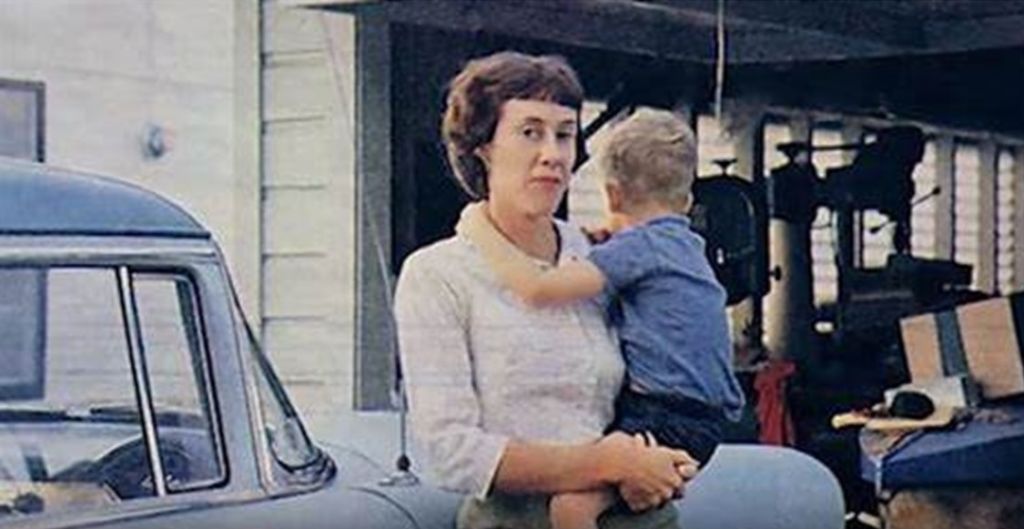 [44]
[44]Ruth Paine was a liberal Quaker living in Dallas. She supported racial integration and was interested in learning Russian, which is how she met Marina. She pulled strings to get Oswald a job at the Texas School Book Depository, from where he carried out the assassination.
Oswald was a dangerous man indeed. His childhood had been unhappy. His father had died before he was born, and his mother made a series of poor choices that led to Oswald being sent to many different schools. As a child he was involved in low-grade violence and was considered a bully by peers.
At some point Oswald discovered radical Leftist literature. Through it, he familiarized himself with the anarchist idea of using violence and assassinations to further political aims, euphemistically called the propaganda of the deed [45]. He was already sympathetic to Communism prior to enlisting in the United States Marine Corps in 1956, although his service was unsuccessful by any measure except one: He became a very good shot.
In 1959 Oswald defected to the Soviet Union. His defection was rejected, but after a suicide attempt in a Moscow hotel room, he was given an apartment and a job in Minsk, where he met and married Marina. In 1961, Oswald, Marina, and their newborn baby returned to the US and settled in Dallas, Texas. Oswald found work, but failed to keep a steady job. He quarreled with Marina and physically abused her.
Oswald first decided to assassinate Edwin Walker [46], a military officer and Right-wing activist, and purchased a rifle to do so in March 1963. On April 10, 1963, Oswald left a note with instructions to Marina about what to do in the event of his death or arrest and then took a bus to Walker’s residence. His shot missed Walker by an inch, and only because of poor luck: Oswald fired through a window, and the pane deflected the bullet just enough to spare his target. He returned home undetected, also by bus, with his rifle hidden in his coat. Oswald was so deft in his attempt on Walker that he was never even investigated as a suspect. Oswald had the right stuff to be a formidable Left-wing assassin.
Oswald soon went to New Orleans to found a pro-Castro organization called the Fair Play for Cuba Committee. He was arrested after he got in a fight while handing out pro-Castro leaflets to anti-Communist Cubans on August 9, 1963.
His organization was a disappointment. It only ever had one member: himself. Nevertheless, Oswald was interviewed by the local media [47], where he said, “I am a Marxist, but not a Marxist-Leninist.” This indicated that he was familiar with the factions and nuances of far-Left ideology. Oswald was a dedicated Leftist, indeed.
In late September 1963, Oswald travelled to Mexico City by bus to acquire a visa to travel to Cuba. The Cubans wouldn’t give him a visa without Soviet approval, so he shuffled between embassies until he was thrown out of both. Ironically, the two Communist nations recognized that he was dangerous.
Oswald then returned to Dallas, where Ruth Paine [41] used her connections to get him a job at the Texas School Book Depository. The stars had finally aligned for Oswald. While he had been in Mexico, President Kennedy decided to make an official visit to Dallas. His motorcade route was published only a few days prior to his trip, and it just happened to pass by Oswald’s work site. Oswald therefore had just enough time to plan the assassination and the experience to pull it off.
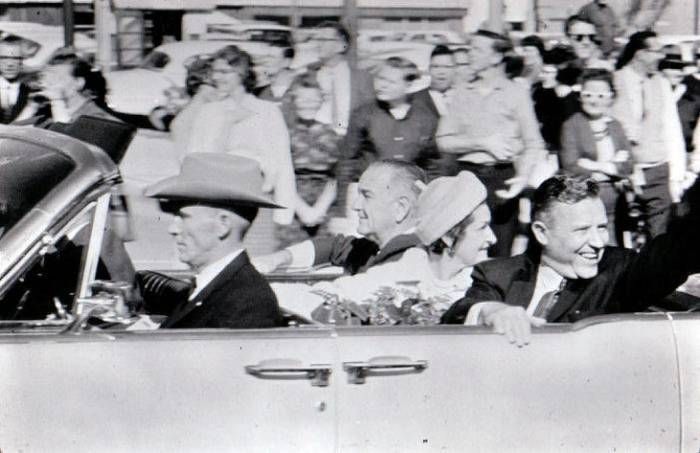 [49]
[49]Vice President Lyndon Johnson and Texas Senator Ralph Yarborough were the leaders of two separate and hostile factions within the Democratic Party. In 1963, LBJ still represented the conservative wing, while Senator Yarborough openly supported “civil rights.” Kennedy used all his considerable charm to get the two men to ride in the same car in the November 22 motorcade.
One of the reasons why so many conspiracy theories have been formulated around the Kennedy assassination is that it was difficult to establish Oswald’s motive for it. The passage of time has clarified matters, however. Kennedy needed to win Texas in 1964, but the Democratic Party was locked in an internal struggle [50], mostly over “civil rights,” though big egos no doubt played a part as well. Two Democratic notables were on opposite sides of the issue. The first was Governor John Connally, [51] who had a conservative view on segregation and other matters, and the other was Texas Senator Ralph Yarborough [52], a liberal. Yarborough and Vice President Lyndon Johnson were also at odds. Kennedy thus had to force his VP and the Senator to ride together in the motorcade.
Kennedy needed to patch things up between Yarborough and the others in order to have a chance at reelection. Kennedy had won Texas by voter fraud in 1960, and he would have understood that disputes between elite politicians within his own party would make pulling it off a second time difficult, since support from local political elites is critical when altering vote counts. Additionally, Kennedy needed to test the waters with ordinary voters and “own the Right” in Texas. Dallas had become extremely Right-wing by 1963 [53].
Fortune brought Kennedy into rifle range of Oswald. Oswald had continued to hone his shooting skills by dry-firing his rifle, which was a military-grade bolt-action rifle. The self-radicalized Leftist knew how to shoot, and Kennedy didn’t stand a chance.
The media
The Kennedy assassination occurred just after television had developed to the point where it was possible to broadcast events live from coast to coast. Reporting a major event like an assassination had never been done before, however, so there was not a sophisticated news-gathering, reporting, and broadcasting apparatus in place yet.
 [54]
[54]You can buy Tito Perdue’s novel Cynosura here [55].
Reporting on the assassination happened on the fly. Television broadcasters had to move their cameras into the newsrooms, and at the time it took 20 minutes to warm up a camera. Reporters broadcasting nationally from New York had difficulty making contact with reporters in Dallas and Washington, DC. Reporters smoked while on the air and called in their reports with from ordinary phones.
When watching the recordings of the reports on the assassination as it was happening, one can see that there was clearly confusion and misinformation from the outset. Reporters initially claimed that a Secret Service agent had been killed. The shooter’s location was also misidentified. While the infamous grassy knoll was mentioned, the most common mistake at the time was the claim that the shooter had fired from the second-floor window of the Book Depository rather than the sixth.
The mainstream media did not appear to be as biased at that time as they do nowadays. The word “appear” is key: There was on-air speculation about “hate groups” being behind the murder. Politically-correct buzzwords about hate were already in the vernacular in 1963. Much was also made of a protest against the United Nations that had been held in Dallas the previous month where then-ambassador to the UN Adlai Stevenson had been struck with a sign by a Dallas housewife.
Besides associating the Stevenson incident to the Kennedy assassination, the media fabricated several other stories as well: Dan Rather claimed that Dallas schoolchildren had cheered [56] when they received word that Kennedy had been shot. The local CBS station chief was so angry that he kicked Rather out of the building afterwards. The affiliate later had to run a correction. For his part, Walter Cronkite falsely claimed that Kennedy’s political rival, Barry Goldwater, had said “no comment” when asked about the assassination.
Perhaps no media figure warped the narrative more than James Reston [57] of the New York Times, however. On the night of the assassination, he wrote [58]:
America wept tonight, not alone for its dead young president, but for itself. The grief was general, for somehow the worst in the nation had prevailed over the best. The indictment extended beyond the assassin, for something in the nation itself, some strain of madness and violence, had destroyed the highest symbol of law and order.
The real killer was a lone antifa gunman who was wildly out of step with the rest of American culture and then destroyed the highest symbol of law and order. The strain of madness and violence to which Oswald had dedicated his life originated in the French Revolution’s bloodshed. Had Oswald not been killed by Jack Ruby, a hothead also acting alone, he would likely have used the trial as a platform to propagate his Leftist views.
The liberals and the Left after Oswald
The fact that the assassin turned out to be a dedicated Marxist was a tremendous blow to liberals and Leftists everywhere. They really wanted to blame the Right in Dallas for the shooting. The conspiracy theories which sprung up afterwards were the result of cognitive dissonance resulting from the fact that Kennedy was killed by a Communist loser. The fact that Supreme Court Chief Justice Earl Warren, whose court had handed down the disastrous Brown v. Board (1954) decision legalizing racial integration, headed up the investigation into the assassination didn’t help matters, either. Putting the chief integrator in charge of such an investigation was bound to create more doubters than believers.
If one looks at the conspiracy theories in this light, the reason they became so pervasive becomes clear. Jim Garrison [59], the New Orleans District Attorney, framed an ordinary citizen [60] named Clay Shaw for the assassination to absolve the Left of the murder. Garrison also wanted to clear Kennedy’s name of the disastrous results of the policies he initiated in Vietnam and elsewhere. By claiming Kennedy was killed by a shadowy group of conspirators consisting of homosexuals, the CIA, the US military, anti-Castro Cubans, the mafia, and others all because he didn’t really want to go to war in Vietnam [61] is a convenient way out of admitting that Vietnam was, in fact, Mr. Kennedy’s war.
The Kennedy assassination unsettled the Democratic Party. Fair-minded liberals such as the Quaker Ruth Paine recognized that Kennedy was killed by a lone gunman who believed in Leftist Ideology, but less fair-minded liberals went down a rabbit hole of untruths. In the early 1960s, liberals believed the Right was a bunch of paranoids, but by the end of the decade, they were looking under every rock for conspirators.
There are genuine conspiracies, of course; the Kennedy assassination simply wasn’t one of them. The ultimate conspiracy in today’s society is “civil rights” and racial integration.
* * *
Like all journals of dissident ideas, Counter-Currents depends on the support of readers like you. Help us compete with the censors of the Left and the violent accelerationists of the Right with a donation today. (The easiest way to help is with an e-check donation. All you need is your checkbook.)
For other ways to donate, click here [63].
Note
[1] [64] Conspiracy theorists who claim this photograph is faked are misreading the data [65]. Oswald was a dedicated Marxist looking to carry out “the propaganda of the deed.”

